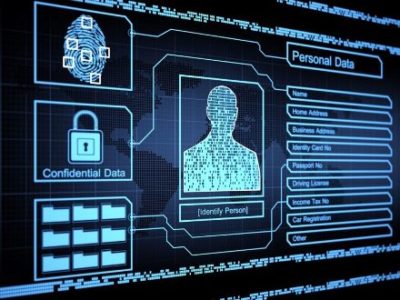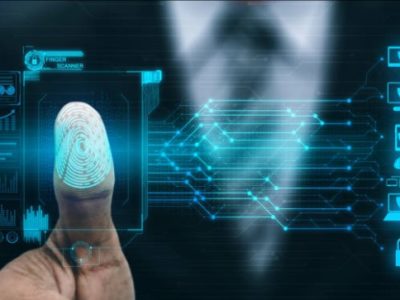By J2 Software national sales manager Roy Alves
AI has emerged as a transformative force with the potential to revolutionise both cybersecurity and cybercrime. On the defensive front, AI offers the promise of improved threat detection, enhanced automation of security processes, and a bolstering of threat intelligence.
RELATED: Bolstering the strength of enterprise cybersecurity
Conversely, on the offensive side, cybercriminals are finding ways to leverage AI for nefarious purposes, including the automation of phishing attacks and evading detection. This article takes an in-depth look at the evolving landscape of AI in cybersecurity and cybercrime, shedding light on its promises and challenges.
The promise of AI in cybersecurity
AI has made significant strides in the fields of machine learning and deep learning, offering a range of benefits in the realm of cybersecurity. One of the key advantages is its capacity to revolutionise threat detection.
AI-powered security systems are capable of analysing vast amounts of data in real-time, surpassing human capabilities in speed and scalability. This ability is invaluable for swiftly identifying and responding to emerging threats.
Moreover, AI’s proficiency in anomaly detection enables it to analyse user and system behaviour patterns, detecting deviations indicative of potential threats. This approach is highly effective against insider threats and zero-day attacks that may go unnoticed by traditional, signature-based security systems.
Another strength of AI lies in its capacity for pattern recognition. Machine learning algorithms can identify subtle patterns and correlations within data, leading to the early detection of emerging threats, sometimes even before specific attack signatures are known.
AI’s contribution to cybersecurity extends further by reducing the number of false positives generated by security systems. By learning what constitutes normal behaviour within a specific environment, AI can focus its attention on deviations more likely to be genuine threats.
Its role in assisting human analysts should not be overlooked. It can automatically surface relevant data and suggest investigative paths, enhancing the efficiency and effectiveness of cybersecurity professionals.
Email security, an area where phishing attacks continue to pose a significant threat, can greatly benefit from AI. AI-powered email security solutions can accurately identify phishing attempts by analysing email content and sender behaviour.
AI’s adaptability is yet another asset. It can continuously learn from new data, making it effective against rapidly changing attack tactics and techniques.
More importantly, AI can monitor network traffic for suspicious patterns and potential intrusions, even identifying patterns indicative of data exfiltration attempts. This ability to manage large volumes of data and alerts in a cost-effective manner reduces the need for a vast security analyst workforce.
AI’s limitations in cybersecurity
It’s important to recognise that AI is not a panacea for all cybersecurity challenges. Its effectiveness hinges on various factors, including how well it is implemented, the quality of data it uses, and its integration with existing security measures. Human expertise remains an indispensable component of cybersecurity, and AI should complement, rather than replace, human professionals.
The threat of AI in cybercrime
While AI holds promise for improving cybersecurity, it simultaneously presents significant concerns on the cybercriminal front. Cybercriminals are leveraging AI’s capabilities for malicious purposes, including the automation of various aspects of attacks.
This automation enables them to carry out large-scale campaigns, overwhelming defences with activities such as phishing and brute-force attacks.
Additionally, cybercriminals are actively developing adversarial techniques to outsmart AI-powered security systems, evading detection and perpetuating a constant challenge for defenders. AI-generated deepfake content is another area of concern, as it can deceive victims in social engineering attacks, leading to fraud or data breaches.
AI’s ability to identify previously unknown vulnerabilities, known as zero-day exploits, enables cybercriminals to target unpatched systems and applications. Moreover, it can generate or manipulate data in ways that are difficult to distinguish from authentic information, leading to data breaches or misinformation campaigns.
Privacy violations are also a potential consequence of AI’s prowess in processing vast amounts of personal data. AI-powered surveillance systems, for instance, can track individuals without their consent or knowledge.
Furthermore, AI can obscure the true source of cyberattacks, making it challenging for law enforcement to take action against malicious actors. AI-powered malware, capable of adapting to its environment and evading detection, poses a significant challenge to traditional antivirus solutions.
Large-scale AI-driven attacks could potentially disrupt critical infrastructure, financial systems, and even entire economies, resulting in substantial damage and financial losses.
Ethical considerations
The use of AI in cybercrime raises ethical questions regarding responsible development and deployment. There is a growing need for ethical guidelines and regulations to ensure that AI is employed for positive purposes rather than malicious intent.
Retail pharmacy chain facing R10-million fine after client data breach
In a recent and pertinent example of the consequences of data breaches, a leading South African retail pharmacy chain faces a potential R10-million fine after a significant client data breach. This incident underscores the real-world impact of cyber threats, emphasising the urgency for robust cybersecurity measures in the digital age.
As organisations grapple with the implications of data breaches, the role of AI in both fortifying cybersecurity defences and the arsenal of cybercriminals becomes increasingly critical.
Addressing AI’s impact on cybersecurity and cybercrime
To address these challenges, a multi-pronged approach is required. This approach includes the development and implementation of advanced AI-powered security solutions, the adoption of improved cybersecurity practices, increased awareness and education on AI-driven threats, and international cooperation to combat cybercrime and establish global standards for AI-related security.
AI is a double-edged sword in the world of cybersecurity and cybercrime. While it holds tremendous promise for enhancing threat detection and response, it also poses significant challenges when exploited by malicious actors.
The key to harnessing AI’s capabilities lies in responsible and collaborative use to build a more secure digital landscape. Effective cybersecurity remains a multi-faceted endeavour that incorporates technology, human expertise, and proactive strategies to stay ahead of evolving threats in this AI-driven world.































